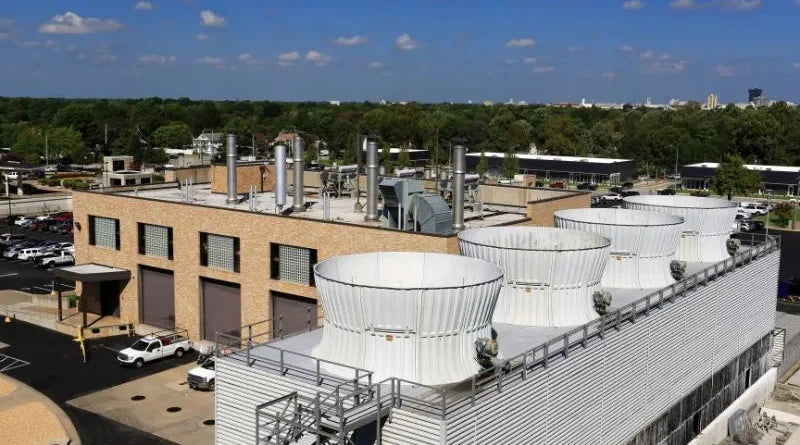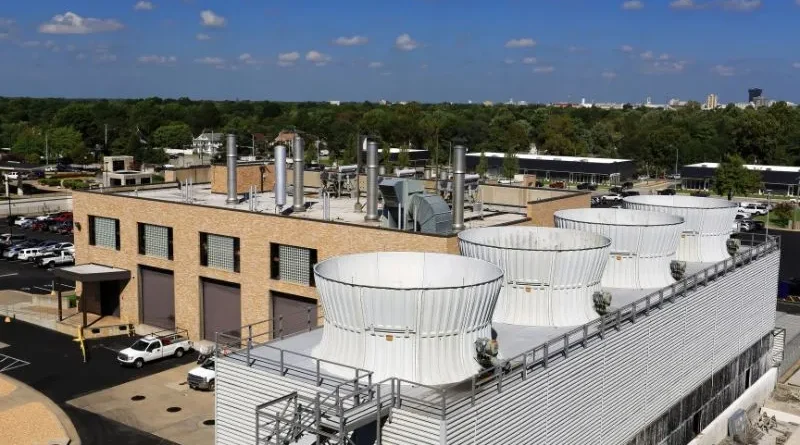
In industrial processes, data centers and HVAC systems, efficient cooling is critical to maintaining equipment performance and preventing overheating. Cooling towers play a critical role in achieving this goal as they dissipate heat through evaporation. In this in-depth guide, we explore different types of cooling towers, their features, benefits, and how to choose the best one for your specific needs.
Understanding Cooling Towers
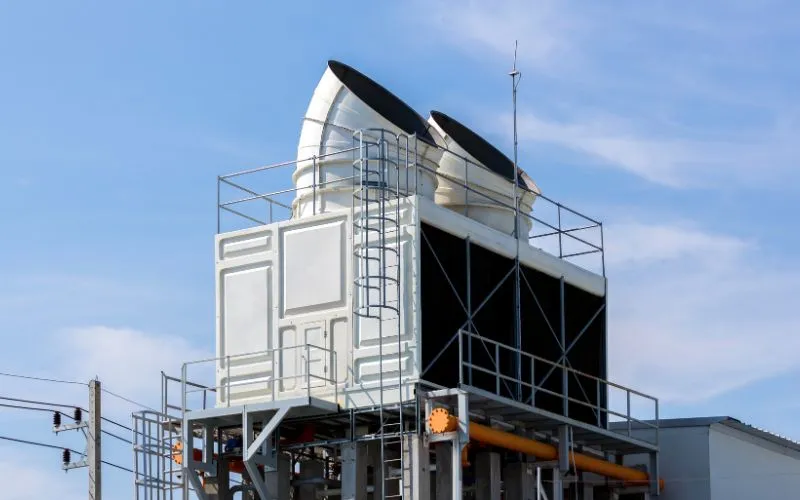
Cooling towers are heat dissipation devices used in various industries to remove excess heat generated during industrial processes or to maintain ideal temperatures in HVAC systems. They work on the principle of evaporative cooling, in which water is exposed to the atmosphere, causing part of it to evaporate and thus removing heat from the remaining water.
Types of Cooling Towers
Cooling towers come in different types, each with unique features and applications.
Natural draft cooling towers
Natural draft cooling towers use the buoyancy of hot air to pull air through the tower. These towers are generally large and tall, making them suitable for power plants and heavy industry. They are very energy efficient, but require a lot of space and are expensive to produce.
Mechanical Draft Cooling Towers
Mechanical draft cooling towers use fans or blowers to force air through the tower. They are more compact and versatile than natural draft towers and are often used in commercial and industrial settings. Mechanical draft cooling towers are divided into:
Cooling towers with pressurized ventilation
The fans in pressurized cooling towers are located at the base of the tower and force air upward through the heat exchange medium. This design ensures consistent airflow and makes the cooling towers efficient and adaptable for diverse applications.
induced draft cooling towers
Induced draft cooling towers position fans at the top of the tower that draw air through the heat exchange medium. This configuration minimizes the risk of recirculation and allows for better airflow control. Induced draft cooling towers are often preferred due to their energy efficiency.
Cooling tower projects
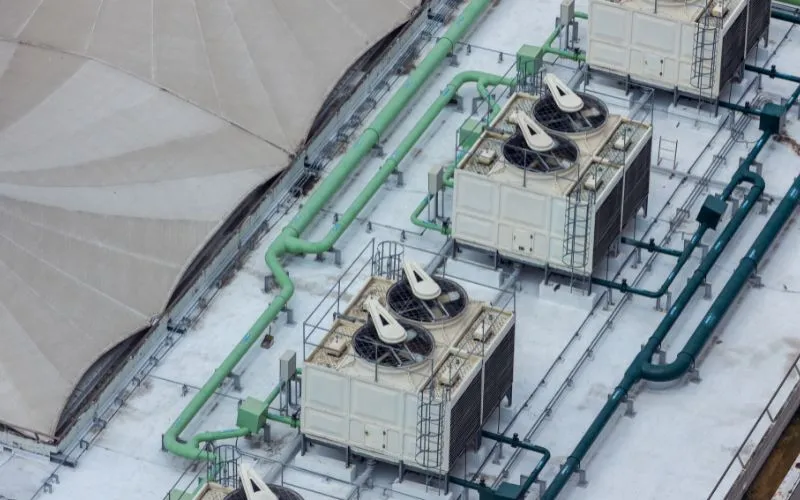
Cooling towers can also be categorized by their design, particularly the way air and water interact within the tower.
Crossflow Cooling Towers
In cross-flow cooling towers, air flows horizontally over the water flow. This design provides efficient heat transfer and is often used in smaller industrial applications and HVAC systems.
Countercurrent cooling towers
In counterflow cooling towers, air and water flow in opposite directions. This configuration maximizes heat transfer efficiency and is often used in larger industrial processes that require high cooling capacity.
Choosing the Right Cooling Tower
Selecting the cooling tower best suited to your needs is critical to efficiency and cost-benefit. Consider the following factors when making your decision:
Factors to consider
- Heat load : Calculate the heat load your cooling tower must withstand. This depends on the equipment or process that is cooling.
- Space limitations : Assess the space available for installation. The choice between towers with natural tension and towers with mechanical tension depends on this.
- Water quality : The quality of the water source can affect the type of tower needed and maintenance needs.
- Environmental regulations : Make sure your cooling tower complies with local environmental regulations regarding water use and emissions.
Efficiency and sustainability
Efficiency is an important consideration when selecting a cooling tower. Induced draft cooling towers are often more efficient than forced draft cooling towers due to their airflow control. When making your choice, consider environmental impact and sustainability, such as: B. Water consumption and energy efficiency.
Maintenance and costs
When choosing a cooling tower, consider maintenance needs and associated costs. Mechanical draft cooling towers generally have lower maintenance requirements than natural draft towers, which may require more frequent inspections and cleaning.
Cooling tower materials and construction
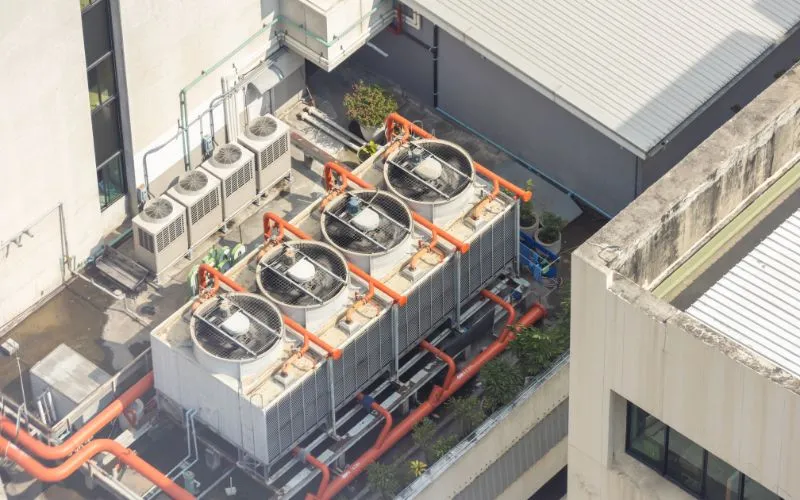
In addition to types and designs, cooling towers can also vary in terms of the materials used in their construction. The choice of materials can significantly affect the durability and corrosion resistance of the tower. Here are some materials commonly used in cooling tower construction:
- Galvanized steel : Galvanized steel is a popular choice because of its strength and resistance to rust. It is widely used for structural components of cooling towers.
- stainless steel : Stainless steel is another corrosion-resistant option and is often preferred in environments where rust or contamination may be a problem.
- Glass fiber reinforced plastic (GRP) : Cooling towers made from glass fiber reinforced plastic (GRP) are lightweight, durable and extremely resistant to corrosion. They are often used in applications where water quality plays an important role.
- concrete : Concrete cooling towers are known for their sturdiness and longevity. They are suitable for large industrial applications and power plants.
Conclusion
Cooling towers are essential components in various industries and applications. They are crucial to maintaining system efficiency and preventing overheating. Understanding the different types, designs and materials used in the construction of cooling towers is important to make informed decisions about the right cooling solution for your needs.
Whether you need a natural draft cooling tower for a large power plant or a compact induced draft cooling tower for your HVAC system, it is critical to carefully consider factors such as heat load, space constraints, water quality and environmental regulations. Additionally, ongoing maintenance and proper water treatment are essential to ensuring the long-term efficiency and sustainability of your cooling tower.
By selecting the appropriate type of cooling tower and carefully maintaining it, you can ensure optimal performance, energy efficiency and cost savings for your industrial processes or HVAC systems. Cooling towers may work in the background, but their impact on your operations is undeniable.
Common questions
What are the main components of a cooling tower?
Cooling towers consist of several main components, including:
- Fan or blower
- Filling material (heat exchange medium)
- Water distribution system
- Mist eliminator
- collection basin
Which type of cooling tower is most efficient?
Induction draft cooling towers are generally more efficient than pressure draft cooling towers. Its design minimizes the risk of backflow and allows better control of air flow, resulting in better heat exchange performance.
How can I improve the efficiency of my cooling tower?
To increase the efficiency of your cooling tower, consider the following:
- Regular maintenance and cleaning to avoid dirt and limescale deposits.
- Use of efficient fans or blowers with variable speed control.
- Monitor and optimize water treatment to maintain water quality.
- Implementation of advanced control and automation systems for better operations.
How often should I clean and inspect my cooling tower?
To ensure efficient operation, cleaning should occur quarterly or more frequently in demanding environments. In addition, a comprehensive annual inspection and regular monitoring of water quality must be carried out.
Related article
Innovative cooling methods for transformers

